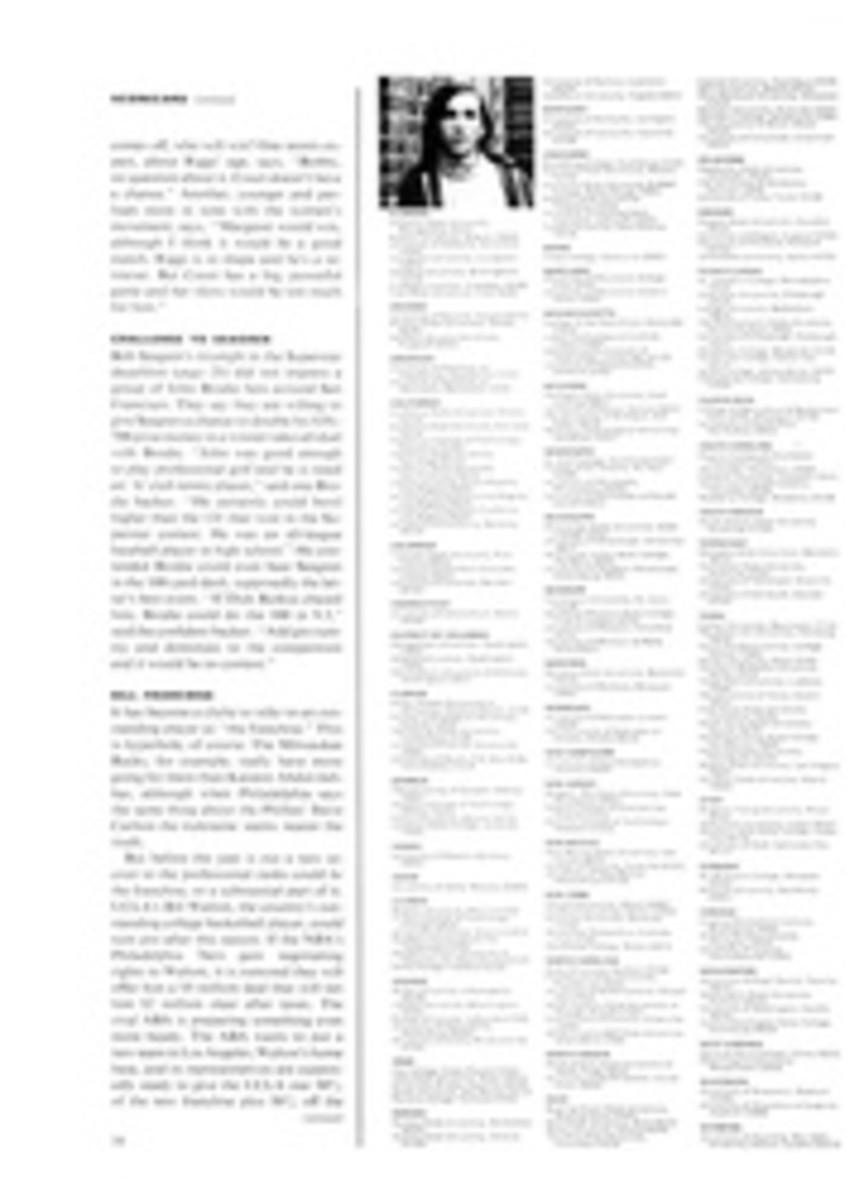
Why climb Specimen Mountain? Because of all the other things that are there
Climb the mountains and get their good tidings," naturalist John Muir wrote more than 100 years ago. "Nature's peace will How into you as sunshine flows into trees...cares will drop off like autumn leaves."
True—if idealized—as this statement may be, it ignores some of the realities of mountain climbing; sore muscles, aching feet and burning lungs, to name a few. And because the discomforts invariably come before the rewards, many climbing novices never achieve the summit. Thus they miss the joys that make the sport what it is.
But 12,489-foot Specimen Mountain in Rocky Mountain National Park, Colo. is the beginner's dream. Its thrills come almost immediately, the climb is short and one can catch the climbing fever there after working up the most modest of sweats.
The route up Specimen begins at Poudre Lake in Milner Pass, 10,758 feet high, and follows closely along the Continental Divide. The trail is steep at first, but the large fir trees make good leaning posts, and through the short summer the floor of the forest abounds in snow buttercups and globeflowers, red crown, Indian paintbrush and Colorado blue columbine.
Timberline is less than a mile uptrail. Here the trees are stunted—bent sticks with a few scraggly branches growing toward one side. Beyond them is the tundra, at around 11,500 feet, where the flowers are brilliant, though they rarely grow more than two inches high.
Specimen is an extinct volcano, but its real crater eroded long ago. The jagged southwest slope is nicknamed the Crater and, looking down its spires, climbers often see bighorn sheep drawn to salt deposits there. Elk frequent the slopes, and mule deer are fairly common in the woods. Wildlife on a small scale includes the golden-mantled ground squirrel, the pika and the marmot.
From the Crater the trail shoots straight up to a false summit at 12,269 feet. This is the roughest part, but the discomfort is alleviated by the view across the North Fork Valley to the Never Summer Mountains. From here the trail flattens out and the rocks seem actually to jump out of the way. This is because they are not really rocks but ptarmigan, grouselike birds whose natural camouflage makes them invisible until they are almost underfoot. In winter they are completely white, while in summer they take on the color of surrounding rocks.
The last 220 feet to the summit are the steepest part of the climb. On both sides of the trail the drop-off is rather sudden, but the view is unobstructed. When climbers top out, they are confronted with a long narrow summit with Cache la Poudre Creek to the east and the North Fork of the Colorado to the west. It is a favorite picture-taking site, surrounded as it is by mountainous spectacle: the Never Summers to the west, the Mummy Range and Longs Peak to the east and southeast, the Gore Range to the southwest and the Medicine Bow Range to the north, in Wyoming.
Catching a thunderstorm at the peak of Specimen is a singular adventure: it does not do to linger on top when the lightning begins. The wind blows at gale force and the rain comes down in great cold drops that may shortly turn to hail. Things look grim until a couple with two small children trudges past on the way up. Suddenly the going down seems almost gay and care does indeed drop away "like autumn leaves."

